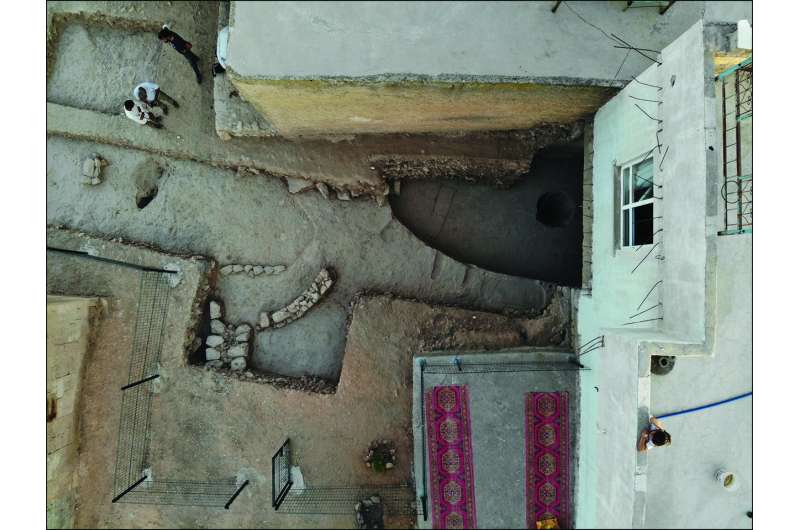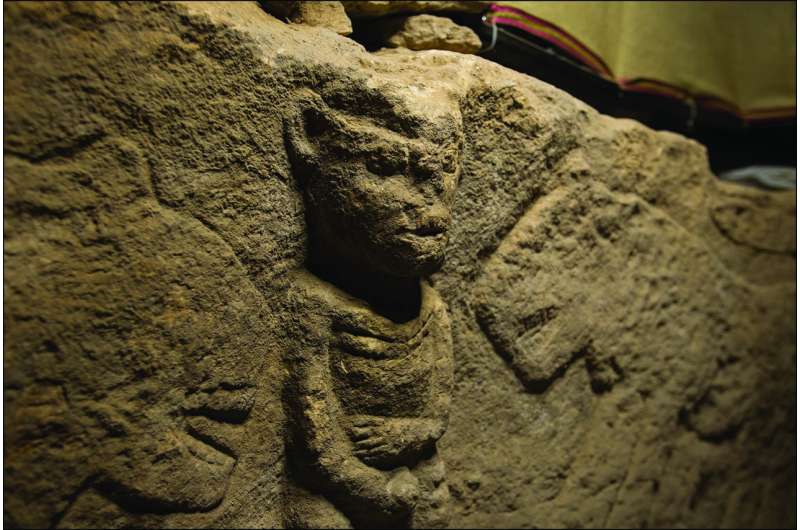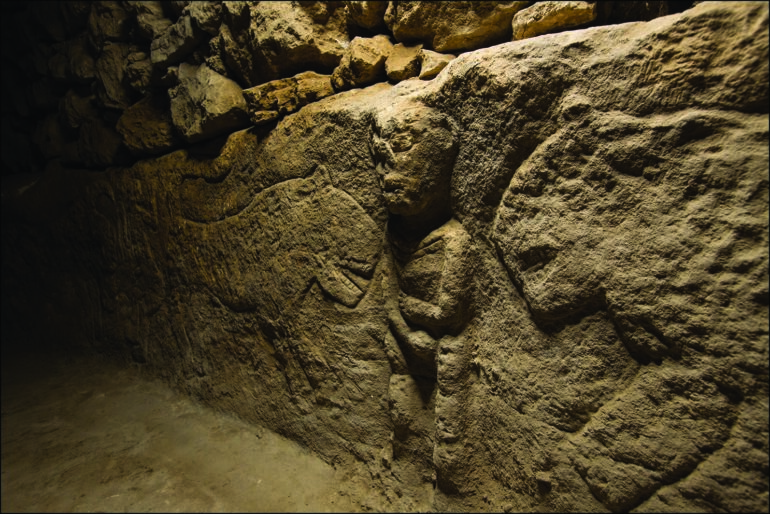Archaeologists have discovered what may be the earliest known narrative scene, telling an ancient story, at the 11,000-year-old site of Sayburç in south-eastern Turkey.
The two panels depict people interacting with dangerous animals. In one, a male human grasps their phallus while leopards approach from either side. In the other panel, a squatting male holding a rattle or snake faces a bull. The teeth of the leopards and horns of the bull are emphasized, highlighting the danger in the scenes.
While similar art has been found at other ancient settlements in the region, the Sayburç images are unique in that they appear to be related to one another. The two panels are horizontally adjacent, creating a progressing scene. Each features similar images—someone facing off against dangerous animals—also indicating a coherent narrative.
“These figures, engraved together to depict a narrative, are the first known examples of such a holistic scene,” said archaeologist Dr. Eylem Özdoğan, from Istanbul University, “This was a picture of the stories that formed the ideology of the people of that period.”

The Sayburç relief. © B. Kösķer
The discovery, reported by Dr. Özdoğan in the journal Antiquity, was made during excavations at Sayburç which began in 2021. The site is located beneath a modern village in the Şanlıurfa Province of Turkey.
The excavations revealed the site was inhabited during the Neolithic, in the 9th millennium BC. This period saw an important transition, with people shifting from a mobile hunter-gatherer lifestyle to farming and living in long-term settlements like Sayburç.
Archaeologists uncovered several residential buildings as well as a large communal structure. This may have served as a place for special gatherings, with benches lining the walls. The narrative images were found carved into the back rests of some of these benches.

The communal building being uncovered between two buildings of the modern village. © Sayburç project archive
“This building has all the characteristic features of the communal structures in the region. In this structure, as in other similar ones, animal and human images were found. However, here the characteristic figures of the period coexist and form a scene,” said Dr. Özdoğan.
Given that the art decorated an important structure, Dr. Özdoğan believes that the figures depicted in the narrative scenes were important characters to this early farming community. Perhaps historical characters or mythical figures that were a key part of the community’s traditions.

Detail of panel from the scene of a male figure flanked by two leopards. © K. Akdemir
“Archaeological evidence can provide some insight into the traditions of the past societies but clearer evidence rarely survives, so this discovery is exciting,” said Dr. Özdoğan, “Sayburç has very clear evidence in this respect and has the potential to tell us a lot about the Neolithic society that we do not know, yet.”
The communal building is still only partially excavated, so more scenes from this ancient story may yet be uncovered.
More information:
Eylem Özdoğan, The Sayburç reliefs: a narrative scene from the Neolithic, Antiquity (2022). DOI: 10.15184/aqy.2022.125
Provided by
Cambridge University Press
Citation:
11,000-year-old carving may be earliest narrative scene (2022, December 8)



